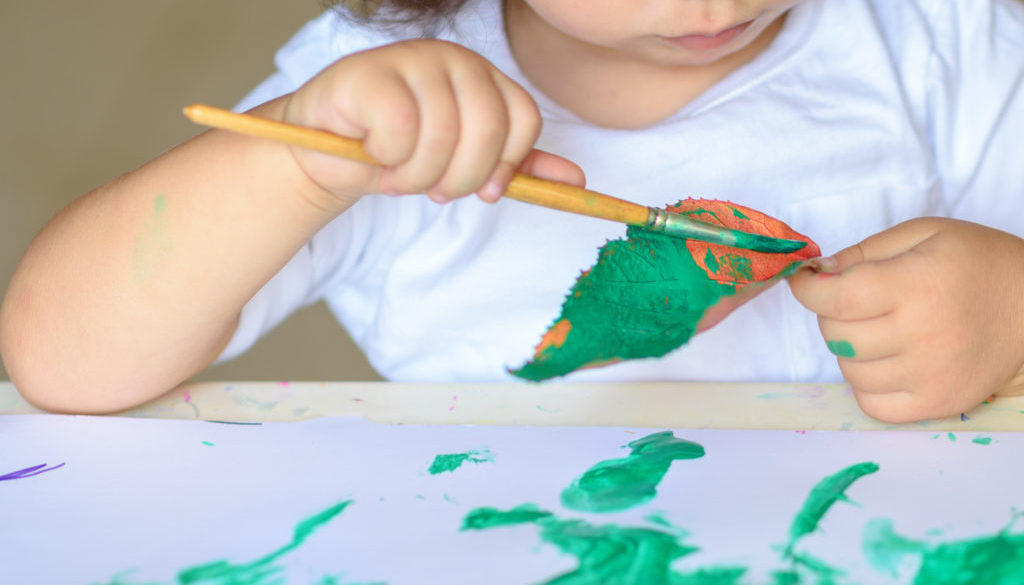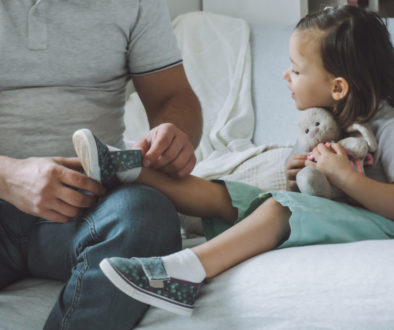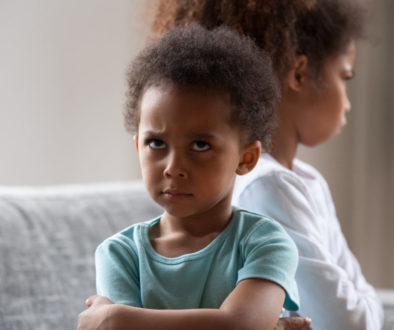Benefits of Creative Art for Children

Art is much more than just a fun way to pass the time for children. Art cultivates important skills that benefit a child’s development, such as fine motor skills, problem solving, self-expression and communication. Art is so important and matters the same way language matters. Creating art allows children to work through feelings and emotions and a finished piece of artwork can be a springboard to help a child talk about feelings in a new and meaningful way.
It is important to remember that a child does not have to create a masterpiece to have a meaningful artistic experience. It’s tempting to want to help our children’s art to turn out exactly how we envision it to prove that they are on track. Art is a way for young children, even babies and toddlers, to create masterpieces of their very own! For an art activity to be truly creative, it is important to remember these tips:
- Crafts are not technically art: While crafts are produced by following directions, there is no right or wrong way in art. It is truly self-expression.
- The process matters in art, not the product: In other words, it’s not what you make; it’s how you make it.
- Children need to be able to use materials in their own way: Given colored circles and glue, one child may line up the circles and call it a train, and another child may delight in gluing circles on top of circles. There is no wrong way to create.
- Children’s skills grow as they do: Babies and toddlers squeeze out globs of glue when given the chance, while three- and four-year-old children can manage one drop at a time. Babies and toddlers scribble back and forth – until they wear a hole in the paper while three- and four-year old children begin to draw recognizable shapes. Adults cannot change these stages of development, nor should they try.
- Don’t label it: Asking children, “what is it?” puts undue pressure on them to make products and telling them what you think they just created can be discouraging for a little artist. Open-ended comments like “look at all of those pretty colors” or “I see you went round and round” shows respect for the artist, as well as the experience itself.
- Let it be all their work: Writing a child’s name on a piece of art alters the finished product. Adults should use pencil whenever possible, or better yet, should write their names on the back of artwork. Of course, when children write their names themselves, the signature becomes an integral part of the “masterpiece”.
- No examples needed: It is best not to provide a sample product for children to copy. Young children find it impossible, and even discouraging, to measure up to the adult example.
The list of creative art experiences for young children is endless.
- Try different painting tools: toothbrushes, cotton balls, swabs, sponges, feathers or golf balls.
- Try different items to glue: moss, leaves, buttons, ticket stubs, bottle caps, aluminum foil, or magazine cut-outs.
- Use different sensory materials: homemade play dough, slime, kinetic sand, or silly putty.
Art is a process, not a product.
Try to keep in mind that as far as art is concerned, the process of creating, exploring, discovering, and experimenting – is the most valuable part. Through self-expression and creativity, children’s skills will develop naturally. Art is a lot of things. Art is creative, sometimes messy and always fun!





